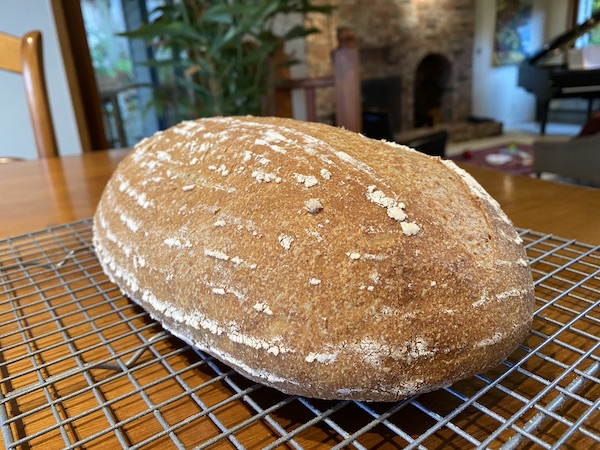Our Daily Bread Recipe
 My standard bread recipe is simple. It is simple because I make it during the week while juggling work, kids, and dinner. The primary requirement for this bread recipe is that the process is reproducible without maths. The second requirement is that the flour bill is flexible and the process constant. I want to swap any grain for any other without having to tweak hydration levels and the like. Meaning the hydration levels are high but not too high and specialty flours are low but not too low. Cynically, it is trying to be the crossover SUV of bread recipes. And here it is.
My standard bread recipe is simple. It is simple because I make it during the week while juggling work, kids, and dinner. The primary requirement for this bread recipe is that the process is reproducible without maths. The second requirement is that the flour bill is flexible and the process constant. I want to swap any grain for any other without having to tweak hydration levels and the like. Meaning the hydration levels are high but not too high and specialty flours are low but not too low. Cynically, it is trying to be the crossover SUV of bread recipes. And here it is.
Recipe summary (for two loaves)
- 360g whole wheat/rye/spelt flour
- 640g white flour
- 640g water
- 1 tsp dry yeast
- 4 tsp salt
- 1/4 cup olive oil (optional)
Process - the poolish
The night before (around 8pm), I make the poolish. The poolish sits on the kitchen counter overnight. For general instructions on making the poolish, see this post
- 360g whole wheat/rye flour
- 440g water
- 1 tsp dry yeast
Process - the dough
The next morning at 8am, I add the rest of the water, salt, olive oil, and then the rest of flour (in that order). I knead for 5 minutes or so or until the dough is giving me good feedback. Smack it a couple times (because I like to) and put it in an oiled bowl to bulk ferment.
- 640g white flour
- 200g water
- 4tsp salt
- 1/4 cup olive oil
Process - the ferment
The bread is left to bulk ferment in the mudroom for two hours. I use the mudroom because it happens to stay a constant 80F most of the year. After two hours the bread is generally double the size. I knock out the gas, do a stretch and fold and toss it back in the bowl and into the mudroom for another hour.
Process - the shaping
After the dough has fully fermented, it is turned onto the counter, weighed, and cut in half to make two loaves. I shape the two doughs, one as a boule and the other a batard, and each go into their respective benettons seam side up for proofing. I let these proof for about an hour.
Process - the baking
At the beginning of lunch, it is time to flip the proofed loaves out of the bennetons, onto a sheet of parchment paper, and score the top of the loaves. I preheat the oven to 425F leaving the baking sheet in the oven to heat up. I transfer the loeaves to the baking sheet on the parchment paper, then cover the loaves for steaming. The boule I cover with an oven-proof bowl and the vienna loaf with a staub. After 10 minutes, I remove the bowl and staub and continue baking at 425F for 40 minutes.
Process - the cooling
Take the loaves out of the oven, onto a cooling rack, and forget about it until after work.